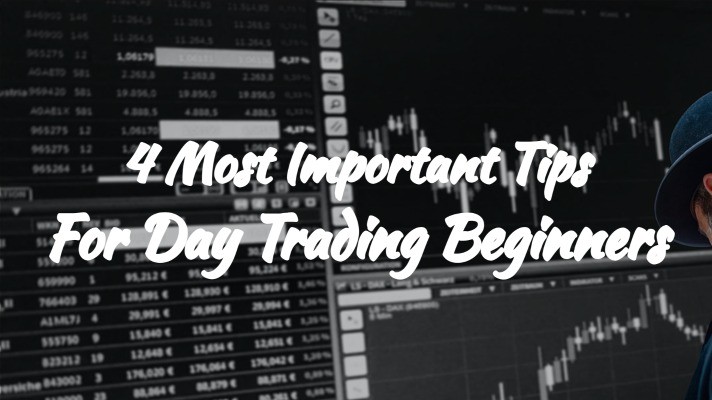Arbitrage trading is a trading strategy that involves taking advantage of discrepancies in prices for the same asset across different markets or platforms. It is a way for traders to profit from the inefficiencies in the market by buying an asset at a lower price in one market and selling it at a higher price in another market.
An arbitrage trader is a person who engages in arbitrage trading as a means of earning a profit. This can be a full-time occupation or a part-time activity, depending on the individual’s goals and resources. Arbitrage traders may work independently or as part of a larger trading firm.
Examples of arbitrage opportunities include: buying a stock at a lower price on one exchange and selling it at a higher price on another exchange, or buying a currency at a lower exchange rate and selling it at a higher exchange rate.
Benefits

There are several benefits to arbitrage trading, including the potential to earn a profit without taking on significant risk, as the trader is not betting on the direction of the market but rather on the difference in prices across different markets. However, arbitrage trading also carries risks, including the risk of market conditions changing unexpectedly and the risk of misinterpreting market data.
There are several ways to find arbitrage opportunities:
- Using financial market data and analysis tools: One way to find arbitrage opportunities is to use financial market data and analysis tools to identify discrepancies in pricing across different markets. For example, a trader might use a price comparison tool to find that the same stock is being sold for a lower price on one exchange compared to another exchange. Other examples of financial market data and analysis tools that can be used to find arbitrage opportunities include trading software, real-time news feeds, and technical analysis tools.
- Identifying discrepancies in pricing across different markets: Arbitrage opportunities can also be found by manually comparing prices for the same asset across different markets. For example, a trader might notice that the price of a particular currency is lower on one exchange compared to another exchange, or that the price of a particular commodity is lower in one country compared to another country.
- Monitoring news and events that can affect market prices: Another way to find arbitrage opportunities is to monitor news and events that can affect market prices. For example, if a company announces a positive earnings report, the price of its stock may increase on one exchange while remaining unchanged on another exchange. A trader could take advantage of this discrepancy by buying the stock on the exchange where the price has not yet increased and selling it on the exchange where the price has increased. Other examples of news and events that can affect market prices include natural disasters, political instability, and economic indicators.
To execute an arbitrage trade, a trader must follow these steps:
- Determining the size of the trade: The first step in executing an arbitrage trade is to determine the size of the trade based on the size of the price discrepancy and the amount of capital the trader has available. For example, if the trader has $10,000 in capital and they identify a $100 price discrepancy between two exchanges, they might decide to execute a trade with a size of $10,000 / $100 = 100 units.
- Placing orders on multiple exchanges or platforms: The next step is to place orders on multiple exchanges or platforms to buy and sell the asset at the different prices. For example, if the trader has identified a $100 price discrepancy between two exchanges, they might place a buy order for the asset on the exchange where the price is lower and a sell order for the asset on the exchange where the price is higher.
- Managing risk through diversification and stop-loss orders: It is important for traders to manage risk when executing arbitrage trades. One way to do this is through diversification, by spreading out trades across multiple assets and markets. Another way to manage risk is through the use of stop-loss orders, which allow traders to set a maximum loss that they are willing to incur on a trade. If the trade moves against the trader and the maximum loss is reached, the stop-loss order will automatically close the trade, limiting the trader’s potential losses.
There are several strategies that traders can use to be successful in arbitrage trading:
- Monitoring market conditions and adjusting trade strategies accordingly: One important strategy for successful arbitrage trading is to continuously monitor market conditions and adjust trade strategies accordingly. This may involve monitoring market news and events, as well as using financial market data and analysis tools to identify changes in prices and trends. For example, if a trader notices that the price of a particular asset is starting to trend upwards on one exchange, they might adjust their trade strategy to take advantage of this trend by buying the asset on the exchange where the price is lower and selling it on the exchange where the price is higher.
- Being flexible and adapting to changing market conditions: Another important strategy for successful arbitrage trading is to be flexible and adapt to changing market conditions. This may involve being open to changing trade strategies based on new information or market conditions, as well as being willing to adjust trade sizes and positions as needed.
- Building a diverse portfolio to mitigate risk: Building a diverse portfolio can also help mitigate risk in arbitrage trading. This may involve spreading out trades across multiple assets and markets, as well as using risk management techniques such as stop-loss orders to limit potential losses.
Questions and answers
What is a person who does arbitrage?
A person who engages in arbitrage trading is often referred to as an arbitrage trader or an arbitrageur. An arbitrage trader seeks out and takes advantage of discrepancies in prices for the same asset across different markets or platforms in order to earn a profit.
Who can do arbitrage?
Arbitrage trading is not illegal, as it is a legitimate trading strategy that involves buying and selling assets at different prices in order to profit from inefficiencies in the market. However, arbitrage traders must comply with all relevant laws and regulations, including laws and regulations related to insider trading and market manipulation.
What is an arbitrage investor?
Anyone who has the knowledge, skills, and resources to find and take advantage of arbitrage opportunities can potentially engage in arbitrage trading. This may include individual traders, as well as trading firms and hedge funds.
Is arbitrage trading illegal?
An arbitrage investor is someone who uses the arbitrage trading strategy as a means of investing. An arbitrage investor may seek out and take advantage of discrepancies in prices for the same asset across different markets or platforms in order to earn a profit, with the goal of growing their investment over time.
In conclusion
Arbitrage trading can be a lucrative strategy for traders who are able to find and take advantage of price discrepancies in the market. However, it is important for traders to carefully plan and manage risk in order to maximize potential rewards. It is also important for traders to be flexible and adapt to changing market conditions in order to maximize their chances of success.







